Do-it-yourself warming of the well or how not to stay without water in winter
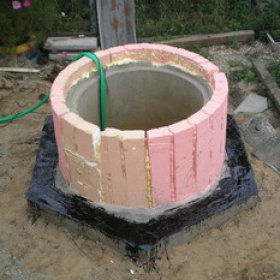
Waking up in the morning, one goes to the kitchen and makes coffee, the other goes to the bathroom to take a shower. For both, to use the water, just open the faucet. But in the village, first you have to run away with a bucket to the well. And it’s good if summer is in the yard. And if winter, minus twenty, and the well froze? A familiar situation, right? So that you do not have to drown snow, you can do the insulation of the well with your own hands or invite specialists.
Content
Why did the water freeze in the well in winter?
- First, the material from which the well was built is important. If this is a tree, then you can calm down: the bucket in it will never hit the ice. If in doubt, remember what they were made of several centuries ago. But now they are using reinforced concrete, which, if some factors coincide, can leave their owners without life-giving moisture.

Wooden wells at any time of the year, even in the harshest winters, made it possible to draw water for the farm
- Secondly, the water level in the well. If the area is swampy and only 1.5-2 meters to the water, then, of course, the risk of seeing an ice shell is very high. Well, if the well is deep, and the water is 8-10 meters above ground level, then there is nothing to worry about.
- Thirdly, the depth of freezing of the soil. In the middle lane and southern regions, where the earth freezes by a meter and a half, the well will not freeze, even reinforced concrete. Water is usually below this mark. But if the soil can freeze by two or four meters, it is imperative to warm the well. So the well, and the nerves, and the money will be whole.
I don’t go to the cottage in winter or why should I insulate a reinforced concrete well?
For those who live in the village year-round, wells are usually insulated. At least a house or a lid is installed, and this is something. "Summer" migrants rarely warm their water sources, not suspecting that they significantly reduce their life span. The fact is that when freezing, water expands and can destroy any material, including reinforced concrete. If the cork is formed at the junction, this leads to a displacement of the rings. An uninsulated well will quickly require repairs, which in terms of material costs are comparable to the cost of a new one. Also, an ice cork, the thickness of which reaches fifty centimeters, can simply break due to a change in water level. Then all pumping equipment in the well will suffer.
The main methods of warming the well
Warm decoration - decorative wooden log cabin
Wood perfectly retains heat.And if the well is completely made of this material, the high cost of construction work does not allow, then you can afford a house of log house. This is still a decorative decision - the tree fits perfectly into any style of a suburban area.
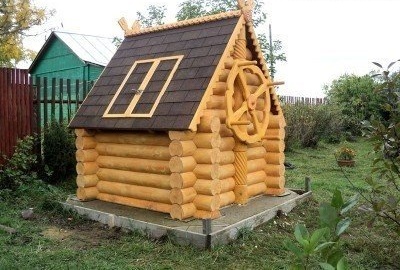
A wooden log house with a house performs several functions: protect the well from freezing, prevent debris from entering the water and decorate the site
You can make a house and a log house yourself, or you can turn to specialists who know how to insulate a well with this material. The place around the well needs to be prepared, for example, to make a blind area, to fill in gravel, lay tiles or paving stones. Then an insulating wooden blockhouse is mounted on top of the well. The space between it and the ring is filled with mineral wool or expanded clay. A decorative house with a gable roof is installed on top of the log house. This design must be protected by impregnation type "Aquatex". The cost of this type of insulation, depending on the shape and size of the log house itself and the house above it, fluctuates.
Pendant ceiling
The easiest way to avoid the ice plug is the insulated lid for the well. It accumulates the heat of water, the temperature of which in winter is 6-7 degrees. It is installed at a depth exceeding the level of soil freezing. At the same time, the cover should not touch water.
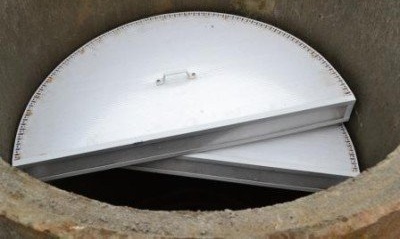
The warming cover for a well reliably protects from freezing. The main thing is not to forget about ventilation so that the water quality does not deteriorate
It is made as follows:
- two shields are cut out from the moisture-resistant plywood according to the diameter of the ring;
- one bottom of them is wrapped with a film to prevent decay, lowered as low as possible to ground level and fixed on suspensions;
- insulation is placed on top of the shield, for example, polystyrene foam or polyurethane foam. Why not mineral wool? This material crumbles, its particles can get into water and make it unsuitable for drinking;
- the second plywood shield is also insulated and placed above the insulation by 80-110 centimeters. Experts disagree: some recommend making an air cushion, others recommend laying the lid directly on the insulation. In any case, if the top cover is above ground level, then the outside of the well must be insulated.
In the manufacture of insulation covers, you need to remember about ventilation. To do this, pass the ventilation pipe through both shields. A two meter piece is enough. The bottom of the pipe should not touch the water.
If the budget allows, you can install a reinforced concrete washer with a plastic hatch. It is more reliable and will last as long as the well itself. Such a cover is installed between the upper and first rings not only during construction, but also after a few years. The seams between them are completely sealed with either liquid glass or cement mortar. Expanded clay is poured over the washer as an additional insulation. The height of the layer is equal to the thickness of the plastic hatch, which is about 8-10 centimeters.
Polystyrene winter coat
Before you warm the well with polystyrene for the winter, you need to carry out preparatory work. A trench is excavated around the perimeter, the depth of which is at least 1.5 meters. Then, the polystyrene shell is selected according to the diameter and size of the rings. It is fastened with connecting tongues. After that, they dig a trench.
The material has many advantages:
- not subjected to deformation under soil pressure;
- resistant to fungi and mold;
- it is easily dismantled during the repair or cleaning of the well;
- retains thermal insulation properties for twenty-five years.
The only significant minus of polystyrene foam is that it is “afraid” of ultraviolet rays.Cope with this problem, in principle, quite simply: you need to paint the shell with oil paint or cover with foil or roofing felt. The cost of this method of insulation depends on the diameter and height of the rings of the well. A polystyrene shell is best made to order, after all, wells may vary in size.
The use of ready-made special insulation
Air polyurethane foam - cheap and warm
Each well needs its own approach. Somewhere it’s enough to build a wooden house, and somewhere you need to insulate the lid and install the polystyrene shell.
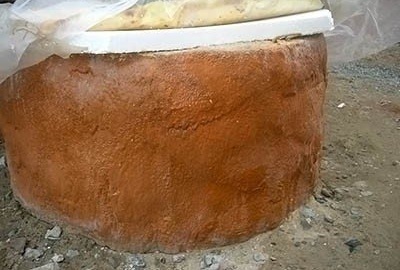
Polyurethane needs mandatory protection from UV radiation. It can be covered with foil or painted with oil paint. Do not use substances containing acetone!
A budget option for warming a well is the use of polyurethane foam. It does not rot, does not secrete harmful substances, does not absorb moisture, and, very importantly, it is not eaten by rats or mice. Yes, and you do not need to prepare the surface of the rings. The material fills all cracks and wall defects, thereby extending their life.
Well insulation with polyurethane foam should be carried out at an ambient temperature of 20 to 30 degrees Celsius. Otherwise, the heat-insulating mixture will foam poorly, the consumption of materials will increase significantly.
First, they dig a trench around the well to the depth of freezing. Then all components of the mixture are brought to the desired temperature. Using a spray gun, polyurethane foam is applied to the walls of the well in a uniform layer. As a result, after solidification, a three-centimeter layer of thermal insulation is formed. It must be protected from ultraviolet radiation with foil or oil paint. A well is a source of water on a site. If defended, it will last for many decades. You can warm the well with your own hands - checked! And if you treat him carelessly, you can stay completely without water on the site. Then no professional can help you anymore.
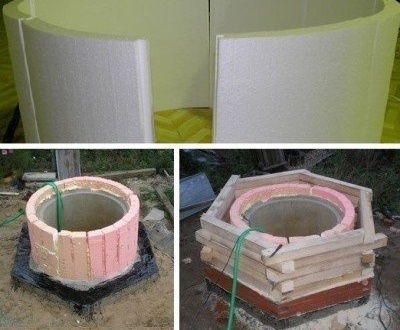

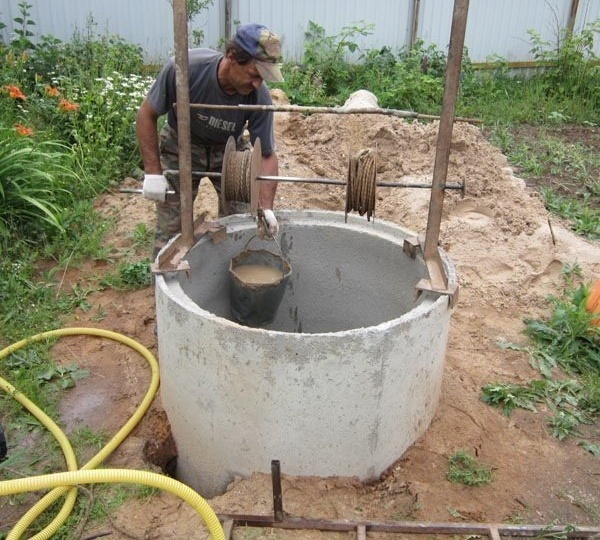
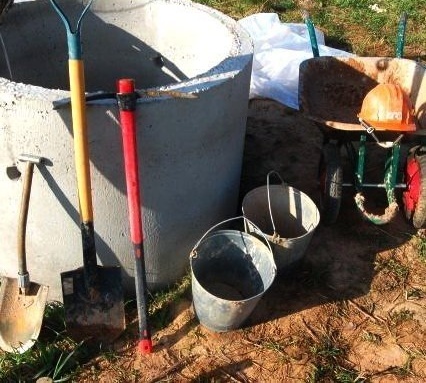
1 comment